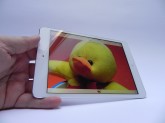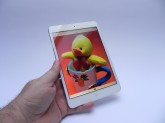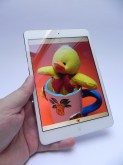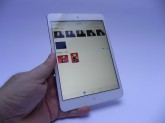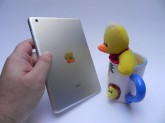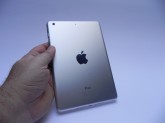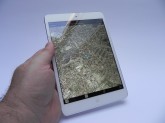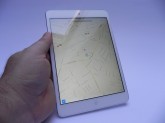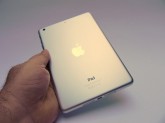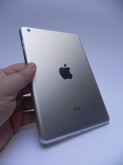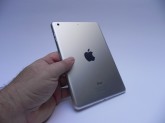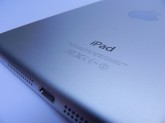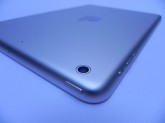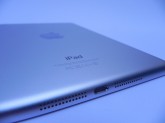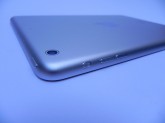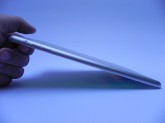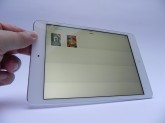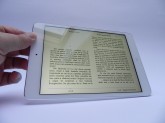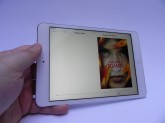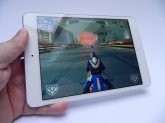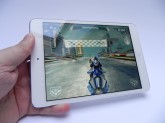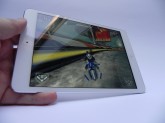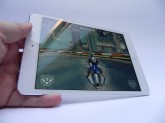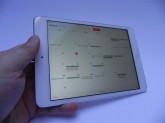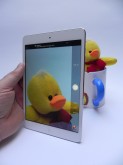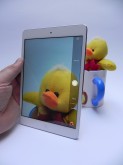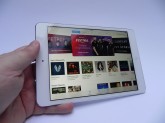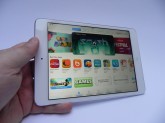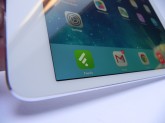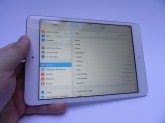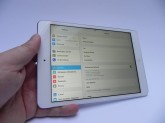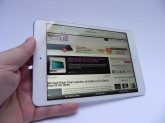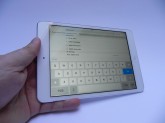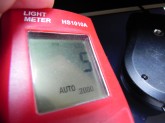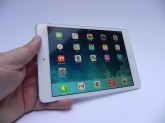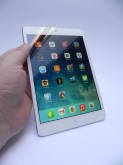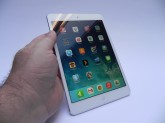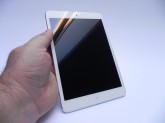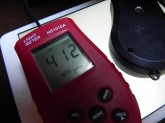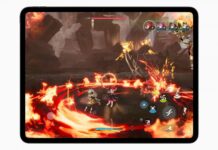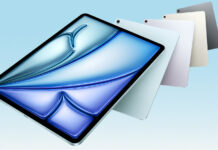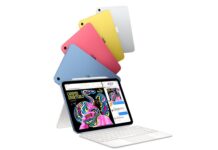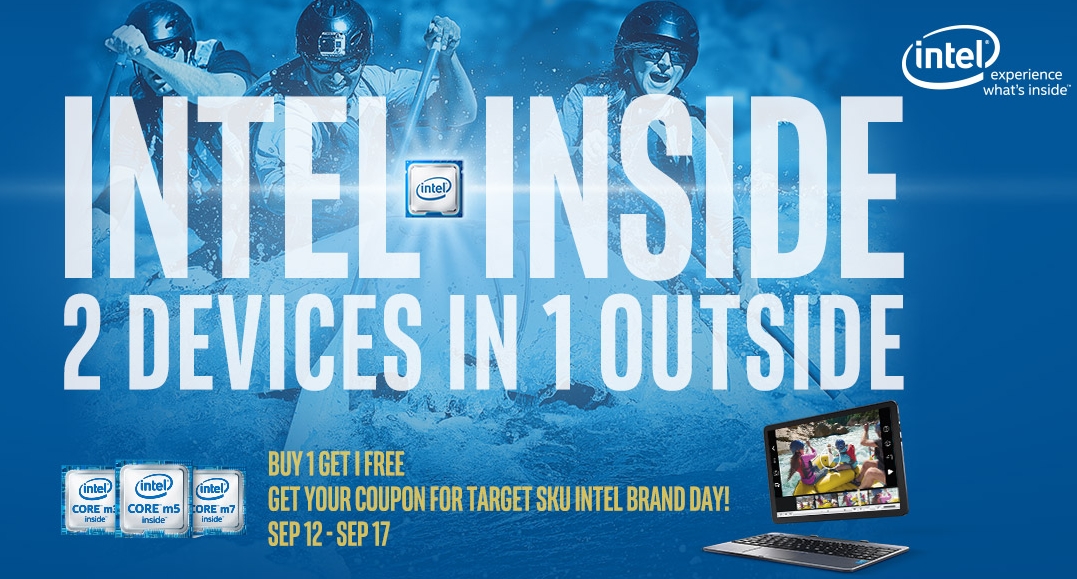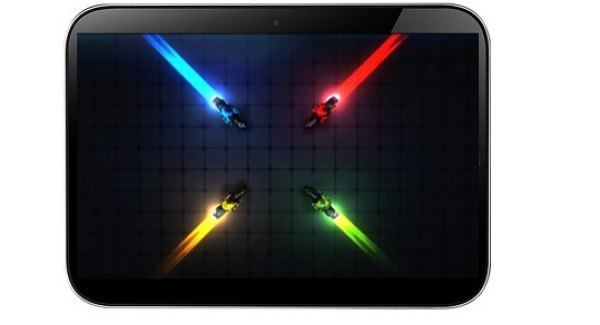The iPad Mini Retina is a very well balanced slate announced in the fall of 2013 and for some reason it has delayed reaching our test table till now. The product is very welcome here, because I’m an iPad Mini owner and I will be constantly comparing the newcomer with my slate. The iPad Mini Retina is a follow up to the iPad Mini 1 with a better screen and CPU basically.
This one is a 7.9 inch tablet with a $399 price tag in USA and the design is 90% the same as the one of the iPad Mini, with a few modifications. The size has changed a bit, so now the thickness is 7.5 mm instead of 7.2 mm and the weight is 331 grams instead of 308 grams. The length and width remain the same and a sure way to tell between the iPad Mini Retina and the Mini 1 is to check the upper back area: if you find two microphone holes, it’s the Mini Retina, if there’s only one it’s the predecessor.
The body of the slate involves aluminum and glass and there’s a premium feel to the usage experience. The grip is good and this device is easy to use with one hand in some of the tasks, like e-reading or opening apps. The volume buttons on the side are pill shaped yet again and we’ve got stereo speakers at the bottom, flanking the Lightning port. This is a comfy model to use and comfy to carry around, so the design gets a big thumbs up from us.
On the hardware side, we get a 7.9 inch display, an IPS LCD with LED backlight and this time this is a Retina Display, meaning we get a 2048 x 1536 pixel resolution. The pixel density is 324 ppi and there’s an oleophobic coating on top of the screen. Inside the slate we find a 64 bit dual core Apple A7 processor, clocked at 1.3 GHz. The GPU is a PowerVR G6430 and storage is 16, 32, 64 or 128 GB.
Finally, there’s 1 GB of RAM, Bluetooth 4.0, WiFi with dual MiMo antenna and LTE in the specific version. The cellular version also brings a GPS on board. iPad Mini Retina uses the M7 motion coprocessor, an accelerometer, compass, 3 axis gyroscope and it comes with a 5 megapixel back camera and a 1.2 megapixel front shooter. The battery is a 23.8 Wh unit, a big increase from the iPad Mini 1’s 16.5 Wh battery. This Li-Polymer juicer achieved 10 hours and 8 minutes in our HD video playback test, with WiFi on and brightness at 50%.
Charging takes 3 hours and 40 minutes and if you want a comparison, the iPad Air does 11 hours, so we’re not very far from that. However, the iPad Mini 1 was more impressive, even achieving close to 12 hours. I must say that the rivals aren’t doing better, since the likes of LG G Pad 8.3 and Nexus 7 2013 are stuck a bit over 7 hours, so the iPad Mini Retina’s 10+ hours is excellent, although lower than the predecessor’s usage time.
On the audio side of things, the speakers provide a loud volume, clear acoustics, good bass and the speakers are not muffled in landscape, when you play games or watch video. This model is less loud than the iPad Air, but the increase in quality is clear compared to the iPad Mini 1. It’s also a good think that the back doesn’t vibrate like on the previous Mini.
The screen here is an IPS LCD, that doubles the pixel density of the previous unit and it’s a sharp and clear display. It provides wide viewing angles, vivid colors, on oversaturation, no sunlight problems and we achieved 412 lux units on white, when measuring with our luxmeter. On black we reached 5 lux, that means the backs are not that deep. Pixels are of the RGB Stripe kind here and while the brightness may sound very good, the Nexus 7 2013 was actually better, at 500 lux.
Anyway, in everyday use, you’ll feel that your screen is very bright, so we’ve got no complaints. The text is incredibly crisp and the colors really pop out, so the display is very, very good. As far as the camera goes, this 5 MP unit is supposed to be the same as the one from the iPad Air and iPad Mini 1. Meanwhile, the FaceTime camera has a larger sensor and handles low light situations better.
Options of the main cam include HDR, Video, Photo and Square, so they’re pretty basic. There’s also AE/AF lock when keeping the screen pressed and this allows a part of the image to get a certain focus and exposure. As far as the samples I’ve taken with the camera go, they look pretty realistic, although they could have been a little more saturated. The brightness is OK, HDR is efficient and the camera is overall very good, quality wise. IT can easily fight the Nexus 7 2013, that also had an excellent slate camera.
[youtube asOD22MWKxg 660 520]
In the video area we get Full HD 30 FPS capture, with the result being a file with a 17 Mbps bitrate. Audio is mono and there’s no focus problem when filming, which is a great compliment, considering many handset models nowadays have problems in this area, for example. The clarity is excellent and brightness and colors are top notch in the video capture department. Even the digital stabilization is decent.
[youtube z_X6RvrZ4e8 660 520]
After playing some Asphalt on this slate we achieved a temperature of 36 degrees Celsius, so this model doesn’t suffer from overheating and when it gets a bit hot, it usually gets colder pretty fast after that. I wanted to do a bit of boot test time here, and I achieved 20 seconds of booting, from the moment you press the on/off button till you’re in the main menu, while the iPad Mini 1 took 30 seconds, so things have improved. I also tried a WiFi connection speed test, that yielded surprising results.
The iPad Mini 1 got 28 Mbps for download, while on the same network, the iPad Mini Retina only got 19 Mbps, which is very strange, so I’ll have to verify my findings with other users. Feel free to post in the comments section below and clear this matter for us. And now… on to the benchmarks! I compared the iPad Mini Retina to the iPad Mini 1 and the iPad Air and the differences were certainly present.
In 3DMark, the iPad Mini Retina scores 14.629 points, totally above the 2673 of the iPad Mini 1 and just a hair below the 14.740 of the iPad Air. In GFXBench we got 26 FPS in the offscreen test with the Mini Retina, while the iPad Air was close again with 27 FPS and the Mini 1 was far behind, with 3.5 FPS. GeekBench 3 brought the Mini 2 a score of 1397 for the single core test and 2525 for the multi core one, both multiplying by 6 the results of the predecessor. The iPad Mini was only higher by 100 in both tests.
Linpack gave us an average of 967 Mflops, while in BrowserMark 2.0 we got 3478, while the iPad Air beat us just by a few dozens of points. Finally, in Sunspider we got 425, which was basically identical to the iPad Air. This is a huge evolution in performance versus the iPad Mini 1, but the performance is comparable with the one of the Air.
The one advantage of reviewing the iPad Mini Retina so late was that I got to play with iOS 7.1 on it right from the get go. This release came in early March and during the video review I covered the new features it brings to the platform. The package takes up over 200 MB and brings us CarPlay support, new icons for the shutdown action, Facetime notifications with improved organization and a calendar app with a list option.
The Settings now include more accessibility options and button shapes options. Siri can now be held activated longer by keeping the Home button pressed. This pretty much sums up what iOS 7.1 has to offer in a nutshell. Other than that we get the usual package of applications, plus the free productivity suite we can download from the App Store.
In the video review you’ll have a look at the Game Center, Pages, iBooks, iMovie and the App Store, that haven’t changed much from our last review, of the iPad Air. And now let’s have a look at the verdict!
Here are the Pros:
- pretty light and thin by today’s standards
- very powerful hardware
- excellent screen
- excellent audio
- pretty good camera
- games look fantastic
- all the productivity you need with associated apps
And the Cons:
- slight overheating, but passable
- battery less impressive than the iPad Mini’s
- mono audio capture
- screen black is not deep
- no Touch ID, in spite of expectations
As you can see, the Cons are all things we can live with, without regretting the purchase, that’s why this is a very solid slate. The iPad Mini Retina gets from us a 9.6 out of 10 for design, a 9.7 for hardware and a 9.5 out of 10 for OS and UI. The final grade is a 9.6 out of 10 and this is probably the best balanced tablet model on the market right now.
[youtube xQMF2WHNgIc 660 520]
Post Footer automatically generated by Add Post Footer Plugin for wordpress.









